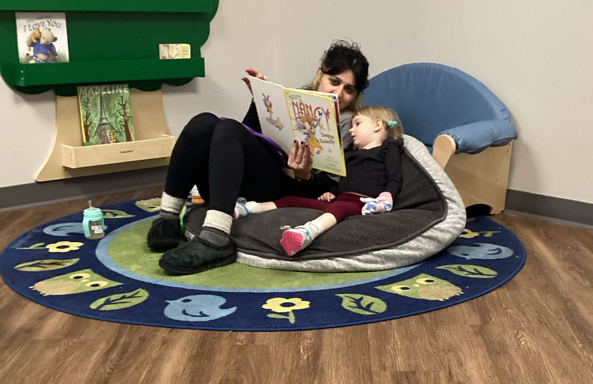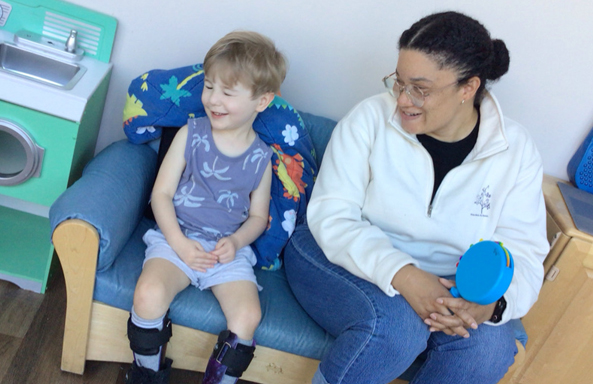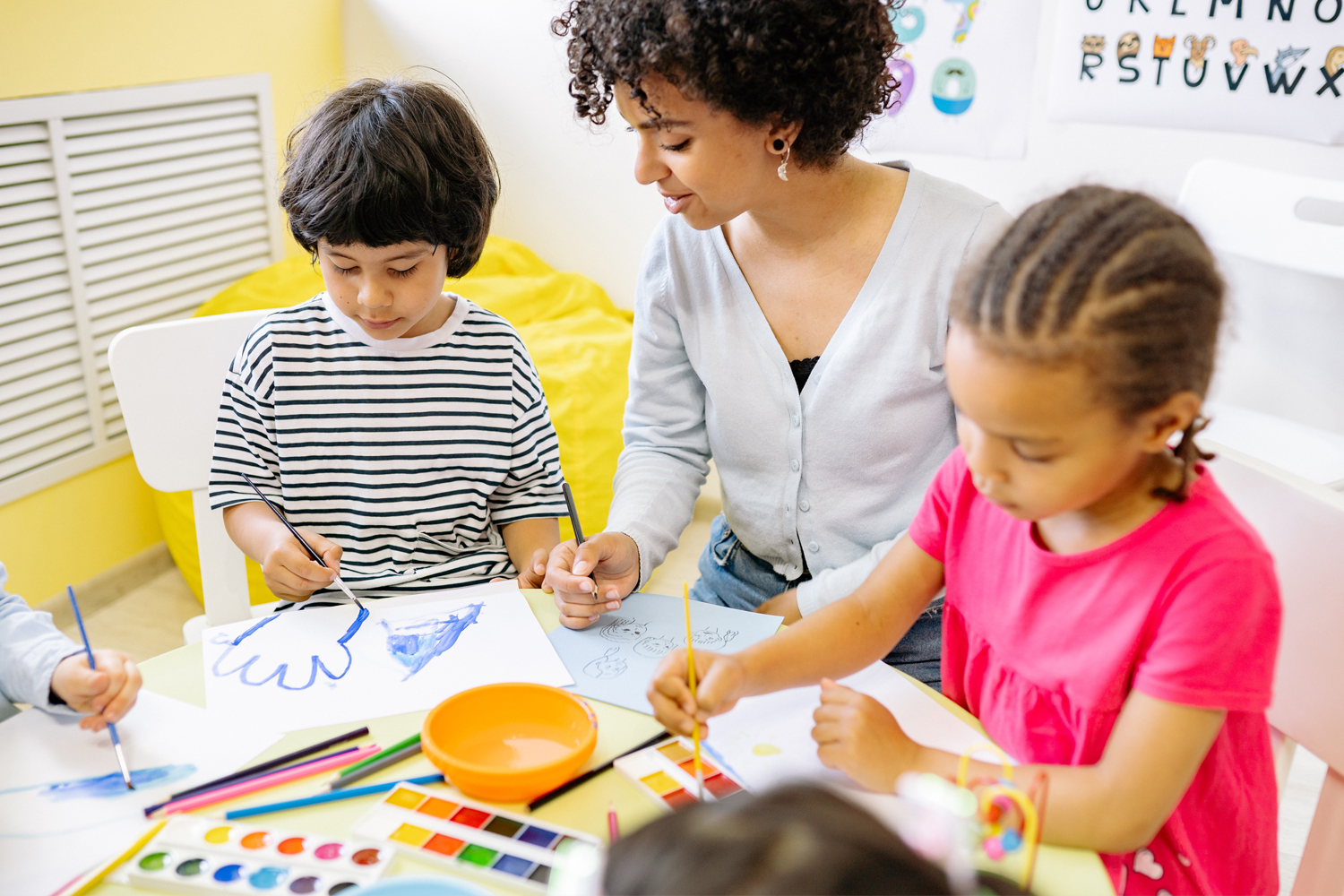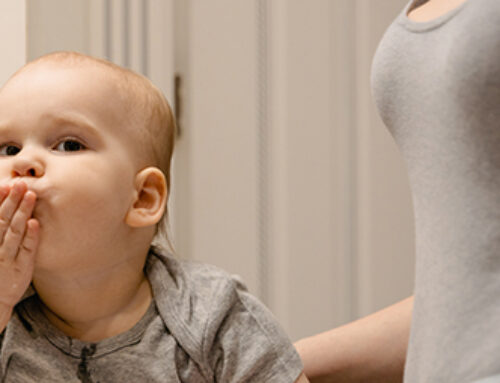Every parent eagerly awaits those first words, listening for the moment when their toddler’s babbling becomes real words like “mama” or “dada.” It can seem like forever and worry starts to set in when your three-year-old’s speech is not as clear as their peers. These concerns are completely natural, and you’re not alone in wanting to understand what is typical for your child’s speech development at their current age.
Understanding speech sound milestones helps you get a clearer picture on your child’s communication journey. We have discovered that speech development follows predictable patterns and each child progresses at their own pace. Some children speak clearly early, while others take time to master certain sounds. Both scenarios are normal.
The key is recognizing the difference between typical variation and signs that your child might benefit from speech therapy. With nearly two decades of experience supporting families through communication milestones, we’ve seen countless children develop clear, confident speech when equipped with the right tools and support.
How Speech Sounds Develop
Speech sound develops gradually as your child’s mouth, tongue, and coordination skills mature. It’s like learning to ride a bike: your child needs both physical readiness and plenty of practice to master each new sound.
Children typically master easier sounds first, then progress to more complex ones. This progression follows a predictable pattern because some sounds require more precise tongue and lip movements than others. For example, the “p” sound only requires pressing lips together, while the “r” sound demands complex tongue positioning that many children don’t master until age seven or eight.
Your child learns speech sounds through listening, imitating, and receiving feedback from the people around them. They naturally experiment with different mouth movements and gradually refine their pronunciation based on what they hear. This process requires thousands of repetitions and lots of patient encouragement.
Understanding this natural progression helps you provide appropriate support and realistic expectations for your child’s speech journey. Each milestone builds upon previous skills, creating a foundation for clear communication.
Age-Appropriate Milestones
Birth to 12 Months: Building the Foundation
During your baby’s first year, they develop the building blocks for speech. You’ll hear cooing sounds around 2-3 months, followed by babbling that includes consonant-vowel combinations like “ba-ba-ba” or “ma-ma-ma” around 6 months.
By 12 months, most children say their first recognizable words, though these might not sound perfectly clear. Your baby should respond to their name, understand simple commands like “come here,” and use gestures combined with vocalizations to communicate their needs.
What you can do: Talk to your baby throughout daily routines, repeat their babbling sounds back to them, and celebrate their communication attempts with smiles and enthusiastic responses.
12 to 24 Months: First Words Emerge
Toddlers typically develop a vocabulary of 20-50 words by 18 months and 200+ words by age 2. Early words often sound simplified—”ba” for ball or “wa” for water—and that’s completely normal.
Most children can produce these sounds clearly by age 2: p, b, m, h, w, and some vowel sounds. They should be understood by familiar listeners about 50% of the time, even if strangers might struggle to understand them.
What you can do: Read simple books together, name objects during play, and expand on your child’s single words by adding one or two more words to their attempts.

2 to 3 Years: Rapid Expansion
Two-year-olds typically add the sounds t, d, n, k, g, and f to their repertoire. Their speech becomes more understandable, and familiar listeners should understand them about 75% of the time.
Vocabulary explodes during this period, often reaching 1,000+ words by age 3. Children begin combining words into simple sentences and asking lots of questions.
What you can do: Engage in back-and-forth conversations, ask simple questions, and provide gentle corrections by modeling the correct pronunciation rather than directly correcting errors.
3 to 4 Years: Clearer Communication
Three-year-olds can typically produce most vowel sounds plus p, b, m, h, w, t, d, n, k, g, f, and often y and ng. Strangers should understand them about 75% of the time.
Their sentences become longer and more complex, and they love telling stories about their experiences, even if the details get mixed up.
What you can do: Encourage storytelling, introduce new vocabulary during activities, and model good listening skills during conversations.
4 to 6 Years: Refining Skills
Four and five-year-olds add sounds like s, z, sh, ch, j, and l to their clear speech repertoire. They should be understood by strangers nearly all the time, though some sounds like “r” and “th” might still be developing.
Grammar becomes more sophisticated, and children can engage in extended conversations about topics that interest them.
What you can do: Play rhyming games, encourage detailed storytelling, and introduce more complex vocabulary through books and experiences.
6 to 8 Years: Mastering Complex Sounds
School-age children typically master the remaining challenging sounds: r, th (both voiced and voiceless), and consonant blends like “str” or “spr.” These sounds require precise tongue positioning that develops with physical maturity.
Children should use adult-like grammar and communicate effectively in various social situations by this age.
What you can do: Encourage reading together, discuss books and movies, and provide opportunities for your child to communicate with different people in various settings.

Red Flags: When to Seek Professional Support
While every child develops at their own pace, certain signs suggest your child might benefit from speech therapy evaluation and support.
Early Warning Signs (12-24 months)
Consider seeking guidance if your toddler isn’t babbling by 12 months, has no recognizable words by 18 months, or seems to have lost previously developed skills. Children should also show interest in communicating through gestures and eye contact.
Difficulty following simple directions or lack of response to their name might indicate hearing concerns that affect speech development.
Concerning Signs (2-4 years)
Two-year-olds who aren’t combining words, have very limited vocabulary, or are difficult for family members to understand may need additional support. Similarly, 3-year-olds who aren’t using simple sentences or 4-year-olds who remain largely unintelligible to strangers warrant professional evaluation.
Frequent frustration during communication attempts or behavioral challenges related to being misunderstood are also important considerations.
School-Age Concerns (5+ years)
Children starting school should be easily understood by teachers and peers. Persistent difficulty with sounds that typically develop by age 5, ongoing grammar errors, or reluctance to speak in social situations might benefit from professional assessment.
Academic challenges related to phonics, reading, or writing sometimes connect to underlying speech sound difficulties.
Playful Ways to Support Speech Development at Home
Everyday Conversation Strategies
Transform routine activities into speech practice opportunities. During meals, name foods and describe textures, tastes, and temperatures. “This soup is hot and creamy” provides multiple speech sounds and vocabulary in natural context.
Bath time offers wonderful chances for sound play. Pour water while saying “pour, pour, pour” or make animal sounds with bath toys. The relaxed atmosphere makes learning feel like play rather than work.
Bedtime stories create perfect opportunities for repetition and new vocabulary. Point to pictures, make character voices, and encourage your child to predict what happens next.
Sound-Specific Games
Create games that target sounds your child is developing. For “p” sounds, pop bubbles while emphasizing “pop, pop, pop!” For “s” sounds, pretend to be snakes saying “ssssss” or airplanes going “zoom.”
Mirror play helps children see mouth movements. Take turns making faces and sounds in front of a mirror, showing your child how tongues and lips move for different sounds.
Music and rhythm naturally support speech development. Sing songs with repetitive sounds, clap syllables in familiar words, or create simple rhymes together.
Reading and Language Activities
Choose books with repetitive phrases your child can join in saying. “Brown Bear, Brown Bear, What Do You See?” provides excellent practice with color words and animals sounds.
Create photo books about your family and activities. Children love talking about familiar people and experiences, providing natural motivation for speech practice.
Make up silly rhymes during car rides or while waiting. “Cat, hat, bat, sat” helps children hear sound patterns while having fun together.
Building Confidence Through Patience and Encouragement
Your response to your child’s communication attempts significantly impacts their willingness to keep trying. Show excitement about their messages, even when pronunciation isn’t perfect. Focus on what they’re trying to tell you rather than how they’re saying it.
Avoid direct corrections that might discourage future attempts. Instead of saying “That’s wrong, say it this way,” try responding with the correct model: “Oh, you want water! Here’s your water.”
Celebrate small improvements and effort rather than expecting perfection. “I heard you working so hard on that ‘s’ sound!” acknowledges their attempts and encourages continued practice.
Create opportunities for successful communication by asking questions you know your child can answer confidently. This builds their sense of competence as a communicator.
The Power of Professional Guidance
Speech-language pathologists bring specialized expertise to support your child’s communication development. They can distinguish between typical variations and patterns that might benefit from targeted intervention. Professional assessment examines not just speech sounds, but also language comprehension, social communication skills, and oral motor abilities. This comprehensive view helps identify the most effective support strategies for your child’s unique needs.
Early intervention often prevents small concerns from becoming bigger challenges. Children who receive appropriate support during their preschool years typically enter school with stronger communication skills and greater confidence.
Our multidisciplinary approach means speech-language pathologists work alongside occupational therapists, developmental specialists, and other professionals to address your child’s complete developmental picture. This integrated model, refined over decades of experience, ensures all aspects of your child’s growth receive coordinated attention.
Supporting Your Child’s Unique Journey
Speech development is just one part of your child’s overall growth and personality. Some children are naturally more verbal, while others express themselves through actions, art, or careful observation before speaking. Your child’s temperament affects their speech development timeline. Outgoing children might practice sounds frequently in social situations, while more reserved children may perfect sounds privately before using them publicly.
Bilingual children follow slightly different patterns as they learn sound systems for multiple languages. This natural process might temporarily slow development in one language while building stronger overall communication skills.
Remember that speech clarity is a tool for sharing your child’s wonderful thoughts, ideas, and personality with the world. Your patience, encouragement, and celebration of their communication attempts provide the foundation for lifelong confidence in expressing themselves.
When Support Makes the Difference
Professional speech therapy provides structured, evidence-based approaches to help children develop clear communication skills. Our therapeutic rotations create natural opportunities for speech practice within engaging, developmentally appropriate activities.
Children often make faster progress in specialized environments where they receive individualized attention and systematic practice opportunities. The combination of expert guidance and peer interaction accelerates learning while building confidence.
We partner with families to ensure strategies used during therapy sessions extend into home and community settings. This consistency helps children generalize new skills across all their important relationships and environments.
Creating Your Family’s Communication Success Story
Every family’s speech development journey looks different, but the destination remains the same: confident, clear communication that allows your child to share their unique perspective with the world. Start where your child is today, celebrate their current abilities, and provide gentle encouragement for continued growth. Whether your child needs extra time to develop certain sounds or benefits from professional support, your patience and advocacy make all the difference.
We are here to support your family through every milestone and challenge. Our experienced team understands that communication development affects every aspect of your child’s life, from friendships to academic success to self-confidence. Your child’s voice matters, and clear speech helps ensure the world can hear their important contributions. With appropriate support, patience, and practice, children develop the communication skills they need to express their thoughts, needs, and wonderful personalities.
If you have concerns about your child’s speech development, trust your instincts and seek professional guidance. Early support provides the strongest foundation for communication success, and our comprehensive evaluation can help you understand your child’s unique strengths and any areas where additional support might be beneficial.
Remember: speech development is a marathon, not a sprint. Your loving support and encouragement provide the most important foundation for your child’s communication success, today and for years to come.

Blue Bird Day—the first therapeutic preschool and kindergarten program in the nation—fosters socialization, sensory regulation, and pre-academic learning in children ages 2-7 years. Our compassionate therapists practice a relationship-based and family-centered approach, provide parent training, and collaborate on goals and individualized intensive treatment plans for your child.
We believe in a collaborative and multi-disciplinary team approach to therapy. A team of occupational therapists, speech-language pathologists, dietitians, developmental therapists, behavioral therapists, physical therapists, and therapeutic assistants are created for each child to ensure child and family are fully supported and the best possible results are achieved.
Options for individualized, group and virtual therapy sessions are available as well.
Want to learn more or you have a specific question? Feel free to connect with us here!



